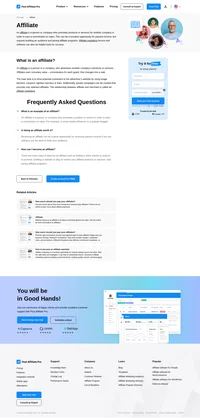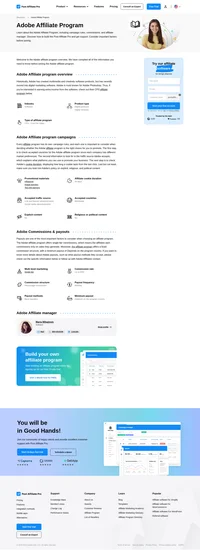What is above the fold?
“Above the fold” is a term with origins in print media, specifically newspapers, and it has been effectively adapted into the realm of digital web design. In its traditional sense, the phrase referred to the upper half of the front page of a newspaper, visible when the paper was folded and presented at a newsstand. This strategic area was often used to display the most eye-catching headlines and images to entice readers to purchase the paper. In the context of web design, “above the fold” denotes the portion of a webpage that is visible without scrolling. Understanding and optimizing this section is crucial for enhancing user engagement and boosting conversion rates.

Historical Context
Origin in Print Media
The concept of “above the fold” dates back to the early days of printed newspapers. Newspapers were typically folded in half, and the top half of the front page was the only portion visible to potential buyers. Editors strategically placed the most compelling stories and images in this area to attract readers’ attention and drive sales. This practice made the “above the fold” section highly coveted for both editorial prominence and advertising value, as advertisers paid premium rates for space in this visible section due to its potential to reach a wide audience.
Transition to Digital Media
With the advent of the internet and the rise of web design in the 1990s, the term “above the fold” was adopted to describe the visible portion of a webpage before a user scrolls down. Although the “fold” in digital media is not a physical crease, the concept remains important for capturing user attention quickly. Web designers began to prioritize this area to ensure that essential content, such as branding, navigation, and key calls-to-action, were immediately visible to users. While the digital fold differs due to varying screen sizes and resolutions, its influence on user behavior continues to be significant.
Importance of Above the Fold in Web Design
User Engagement and Attention
The content displayed above the fold is critical as it forms the first impression for users when they visit a webpage. This area is often the first—and sometimes the only—part of a webpage that users view, making it vital for grabbing attention and encouraging further interaction with the site. Studies have shown that users spend a significant amount of time engaging with above-the-fold content, making it a prime target for impactful messaging.
Impact on Conversion Rates
Placing key elements such as call-to-action (CTA) buttons, engaging headlines, and compelling images above the fold can lead to higher conversion rates. Users are more likely to engage with and respond to content that is immediately visible upon landing on a page. Therefore, businesses often experiment with different elements above the fold to optimize for conversions, using techniques like A/B testing to refine their approach.
Advertising and Revenue
For advertisers, the above-the-fold area is prime real estate. Ads placed in this section are more likely to be seen, increasing their effectiveness and potentially generating more revenue compared to ads placed below the fold. This has led to a competitive market for above-the-fold advertising space, making it a crucial consideration for monetizing websites effectively.
Defining the Fold in Web Design
Variability Across Devices
The location of the fold varies due to differences in screen sizes, resolutions, and device types. On a desktop monitor, the fold might be around 600 pixels from the top, while on a mobile device, it could be significantly different. This variability makes it challenging to define a fixed fold line. Designers must consider various devices and user behaviors to ensure key content remains above the fold across different platforms.
Responsive Design Considerations
Modern web design employs responsive design techniques to ensure that content adjusts seamlessly across various devices and screen sizes. This approach helps maintain the effectiveness of above-the-fold content, regardless of how a user accesses the site. By using flexible grids, layouts, and images, web designers can ensure that users have a consistent experience, whether they are viewing the site on a smartphone, tablet, or desktop.
Best Practices for Above the Fold Content
Prioritize Essential Content
Ensure that the most important information, such as a clear and compelling headline, CTA, and key visuals, is placed above the fold. This content should immediately convey the purpose of the page and guide the user towards the desired action. Highlighting unique selling propositions and user benefits can also help in capturing user interest.
Keep the Design Clean and Uncluttered
A cluttered above-the-fold area can overwhelm users and detract from the message. Instead, use a clean design with ample whitespace to enhance readability and focus attention on critical elements. The goal is to create a seamless and intuitive user experience that draws users in without causing confusion.
Encourage Scrolling
While it’s important to make the most of the above-the-fold space, it’s also crucial to design the page in a way that encourages users to scroll for more information. Visual cues, such as arrows or partial content teasers, and engaging content can entice users to explore further down the page, providing a complete narrative that unfolds as they scroll.
Optimize for Speed
Page load speed is a critical factor in user experience. Ensure that above-the-fold content loads quickly to prevent users from leaving the page due to slow performance. Techniques such as optimizing images, leveraging browser caching, and minimizing JavaScript can significantly improve load times.
Measuring and Testing Above the Fold
Tools for Analysis
Several tools can help analyze the effectiveness of above-the-fold content, including Google Analytics for user behavior insights and A/B testing platforms to compare different design variations. Heatmaps and scroll maps are also valuable for understanding how users interact with a page and identifying which elements capture the most attention.
A/B Testing
Conduct A/B tests to determine which above-the-fold elements perform best in terms of engagement and conversion. By testing different headlines, images, and CTAs, web designers can optimize this critical area for maximum impact. Iterative testing allows for data-driven decisions that enhance user experience and business outcomes.
Considerations for Mobile Devices
Mobile-First Design
With the increasing use of mobile devices for browsing, adopting a mobile-first design approach ensures that above-the-fold content is optimized for smaller screens and touch interactions. This strategy involves designing for the smallest screen first and progressively enhancing the experience for larger screens.
Adapting Content for Mobile
Adjust content placement and design elements to suit the unique constraints and opportunities presented by mobile devices, such as vertical scrolling and touch navigation. Simplifying navigation and ensuring that touch targets are appropriately sized can greatly enhance usability and engagement on mobile platforms.
Frequently Asked Questions
Where did above the fold come from?
The term “above the fold" originated in the printing industry. It referred to the upper half of a newspaper that was visible when the paper was folded in half.
How can I optimize above the fold content?
You can optimize your above the fold content by having a strong H1, adding keywords to the opening paragraphs, and disabling lazy loading for images above the fold.
Why is above the fold important?
Above the fold is important because it is the first thing that visitors will see when they land on a web page. It is important to make a good first impression and to ensure that the most important information is visible without having to scroll.
Discover the role of an affiliate in marketing—earn commissions by promoting products through banners, links, and campaigns. Learn how affiliates drive sales and explore effective marketing strategies. Join the world of affiliate marketing with Post Affiliate Pro for user-friendly tools and exceptional support.
Discover the Adobe Affiliate Program with Post Affiliate Pro. Earn up to 85% commission on Adobe's renowned digital products and services through a CPS model. Enjoy worldwide reach, a 30-day cookie duration, and monthly payouts via bank transfers. Join now to leverage Adobe's trusted brand and boost your income!
Discover the power of link building with Post Affiliate Pro! Learn how acquiring quality backlinks can boost your website's traffic and search ranking. Explore techniques, from creating a compelling blog to building strong relationships, to enhance your SEO strategy. Visit us to elevate your digital presence today!
7 Ways To Speed Up Your Website Right Now
Discover 7 effective ways to speed up your website instantly! Learn how to reduce HTTP requests, optimize images, enable browser caching, use Gzip compression, minimize CSS, and upgrade your hosting. Boost your site's performance for a seamless user experience now!










